How Long Should a Dog Chew on a Bone? (Safety)
Dogs love to chew on bones. It’s an instinct for them and it provides a lot of benefits, including helping to clean their teeth and keeping them occupied.
But how long should they chew on a bone? And is there such a thing as chewing too much?
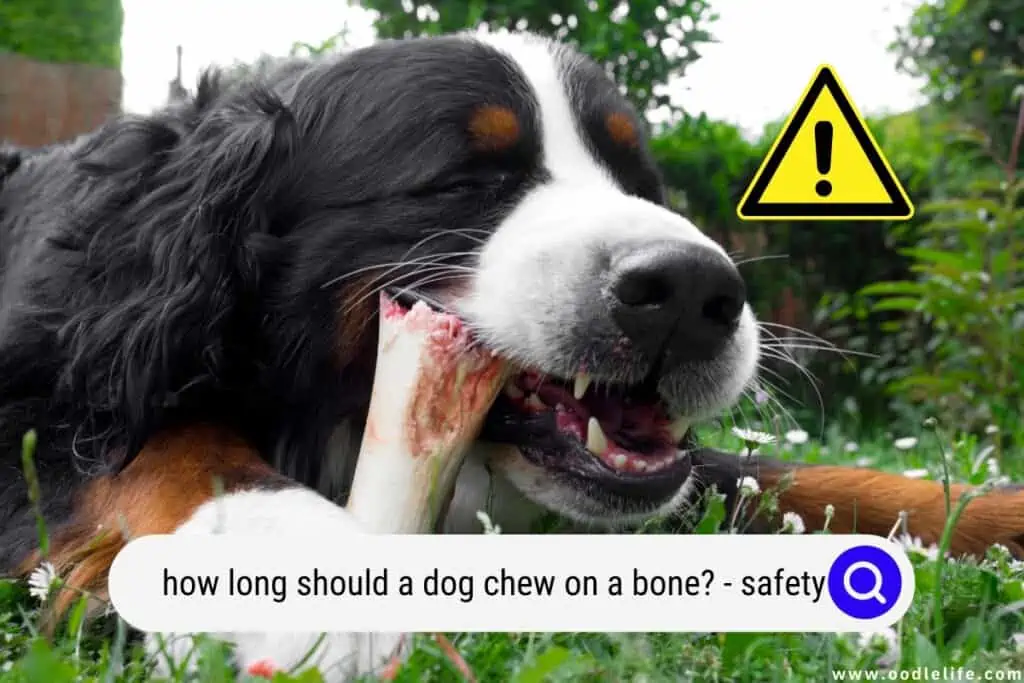
In this article, we’ll answer those questions and more so you’ll never have to wonder if you’re compromising the safety of your furry friend by tossing them a bone.
Is There Such Thing as Chewing Too Much?
The simple answer is no. Chewing in general is a normal and necessary part of being a dog. It needs to do it to keep its teeth clean and healthy and to help with its mental well-being.
Not chewing can lead to all sorts of problems, including dental issues, behavioral problems, and more.
However, chewing a bone shouldn’t take forever, since dogs will eventually whittle it down to a small piece. When it gets too small, the piece may present a choking hazard, and no one wants their dog’s joy to turn into a trip to the emergency room because it lasted a little too long.
So how long should a dog chew on a bone? The answer depends on the type of bone and the size of your dog.
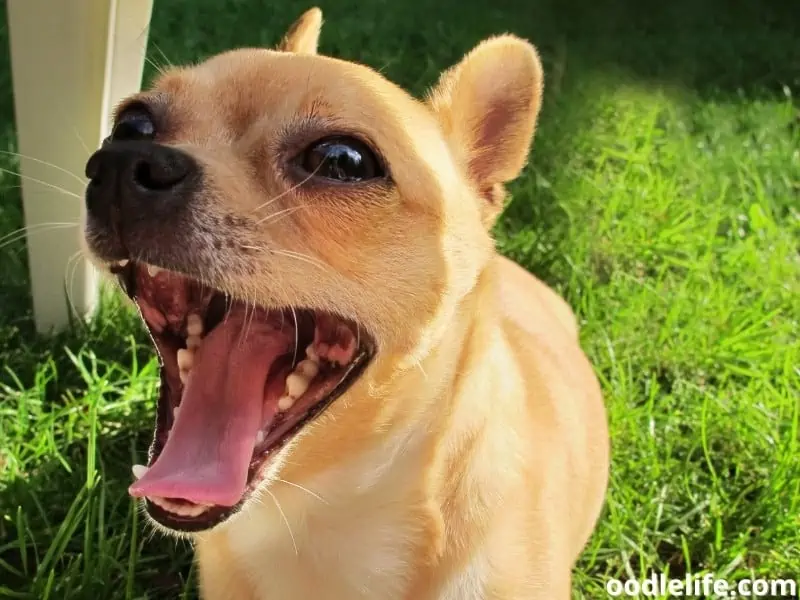
What Kinds of Bones are Safe for Dogs to Chew?
The safest bones for dogs to chew are raw bones that have not been cooked. Cooked bones can splinter and break, which can cause serious injuries to your dog’s mouth, throat, or digestive tract.
There are a few different types of raw bones that are safe for dogs to chew:
- Marrow bones
- Knucklebones
- Rib bones
- Femur bones
Sticking with these four types of bones will offer the most safety. You should avoid “bone treats,” or processed treats made to look like bones, because they have a high risk of issues such as vomiting, rectal bleeding, and more, according to the FDA.
Marrow Bones
Marrow bones are the large, marrow-filled bones from the legs of cows, bison, or other animals and are great for dogs to gnaw on and help keep their teeth clean. Just make sure to supervise your dog while it’s chewing and take the bone away when it gets small enough to pose a choking hazard.
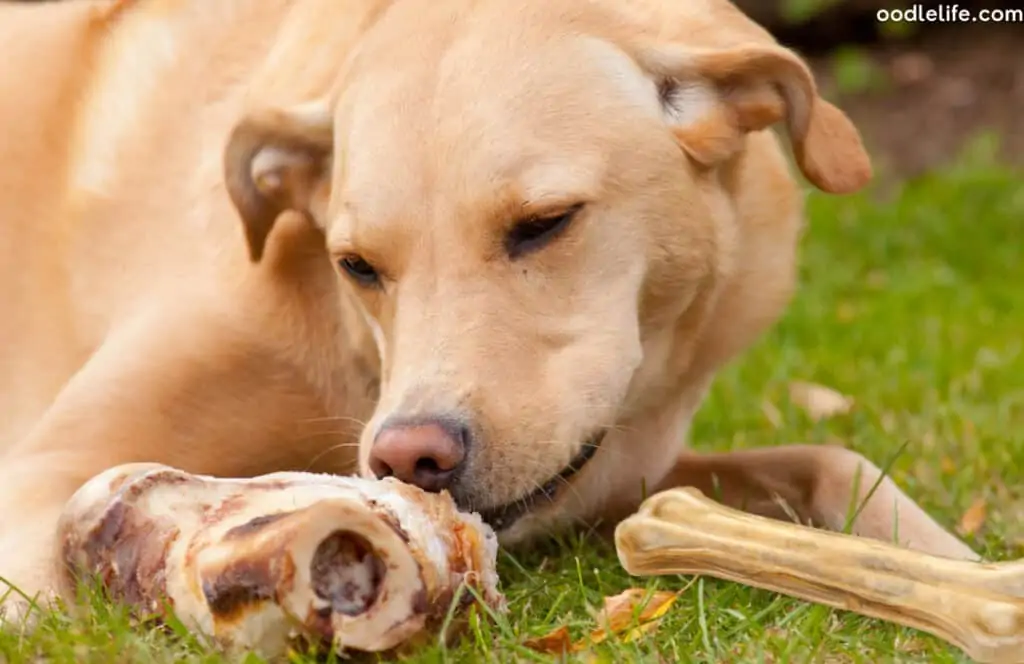
Knuckle Bones
Knuckle bones are larger bones that are good for dogs who like to chew vigorously. Knuckles have less marrow than marrow bones but are still a good source of nutrients for your pup.
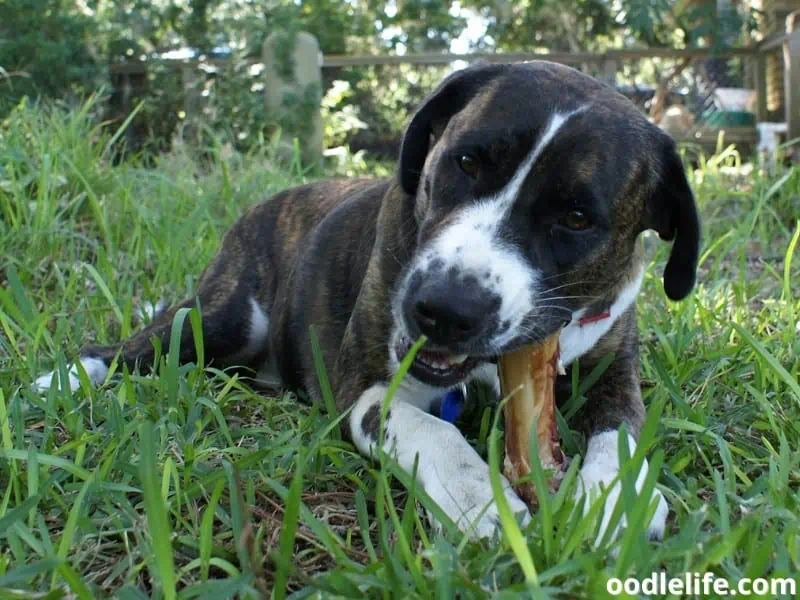
Rib Bones
Rib bones are smaller and easier to chew than marrow or knuckle bones. Ribs are a good option for small dogs or puppies who are just starting to chew on bones and aren’t ready for the big leagues yet.
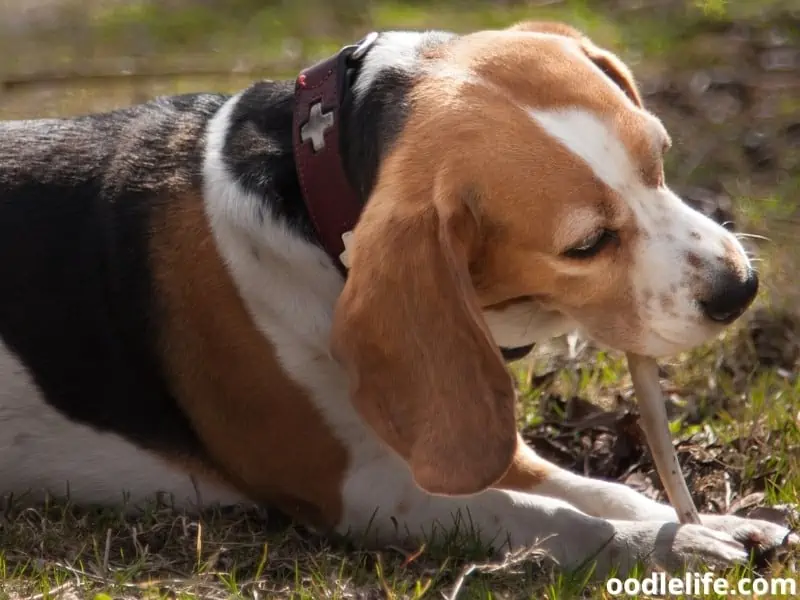
Femur Bones
Femurs are the largest bones in an animal’s body and can provide hours of chewing fun for your dog.
However, they can also be very hard to break apart, so it’s important to keep an eye on your dog while it chews to make sure it’s not eating any large pieces that could cause choking or digestive issues.
As far as which kind of animal bones to look for, you should stay away from pig bones and poultry bones, which can carry dangerous, sickness-causing pathogens or may splinter off due to their hollow and brittle nature.
Bone splinters can poke your dog’s stomach lining and gums, leading to internal bleeding or gastrointestinal injury. Cooked bones can be too soft, and giving them to your dog runs the risk of developing blockages in its airways if it swallows large pieces.
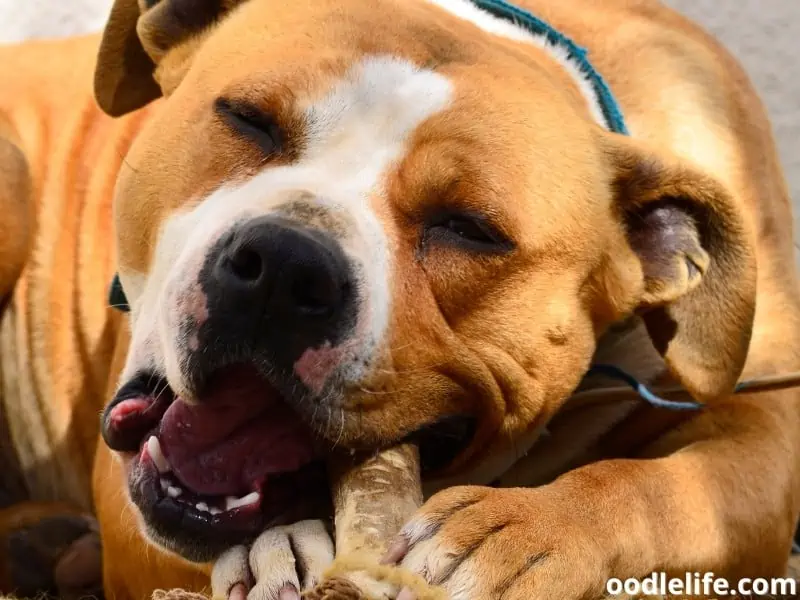
When Should I Take Away My Dog’s Bone?
You should take away your dog’s bone when it gets small enough to pose a choking hazard. You’ll know your dog has reached that point when the bone has been whittled down to about the size of your dog’s mouth.
At that point, anything can accidentally be swallowed and presents a high risk of choking.
How long should a dog chew on a bone time-wise? A general rule of thumb is to give a dog 15-20 minutes of chewing on its bone before you take it away, or at least check in on its progress.
Bones can also become potential choking hazards if the dog chews them into sharp pieces, so it’s crucial to check them regularly for any sharp edges.
If you’re not sure whether or not a bone is safe for your dog to chew on, err on the side of caution and throw it away. It’s not worth the risk to your dog’s health.
It’s also a good idea to actively supervise your dog any time it’s enjoying a bone. While setting time limits can help avoid the dog chewing the bone down to a small size, it doesn’t mitigate the risk of it breaking off small, sharp pieces and accidentally swallowing them.
If you’re nearby and watching, you’ll be ready to take it away whenever it starts to get dicey.
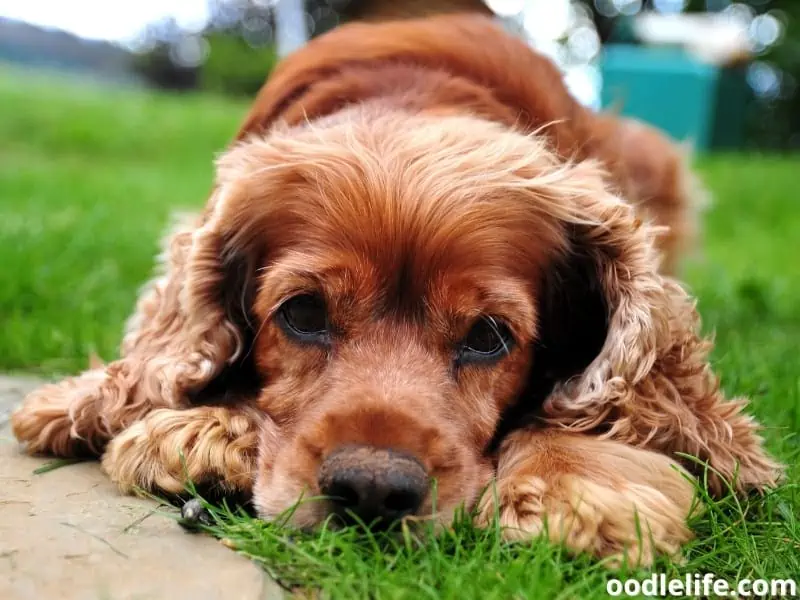
Safely Giving Your Dog Bones
Want your dog to enjoy the many benefits of chewing on bones, like better dental health, a satisfied appetite, and less self-scratching or licking? There are a few things you should keep in mind when giving your dog bones to keep it safe.
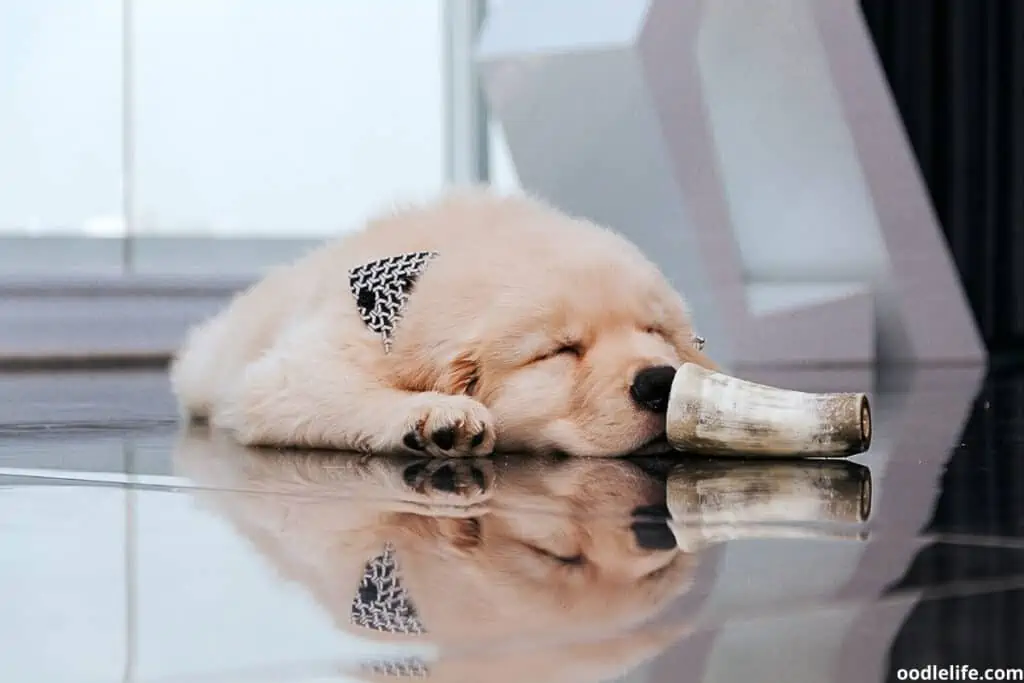
Embrace a Raw-Only Rule
Many vets promote the benefits of raw bones and diets for dogs, citing them as a key component of “evolutionary nutrition.” To support this goal, avoid anything cooked and check to ensure that anything you buy at the store is raw, or give the dog raw bones from your grocery waste. Cooked bones can be extremely dangerous.
Find the Goldilocks Fit
Always use a bone that is the right size for your dog. Your aim isn’t big or small, but just right. A bone that is too big could get stuck in its throat, while a bone that is too small could be swallowed whole and cause an obstruction.
The perfect fit all depends on your dog’s breed and size.
Keep A Watchful Eye
Supervise your dog while it is chewing on the bone or ask someone else to keep an eye on it if you have to get up. If there’s no one available to watch the dog, consider taking it away briefly until it’s back in your view. You’re looking for any broken-off bits or a bone that’s gotten too small.
FAQs About Chewing Dog Bones
Learn more about managing your dog’s safety while it chews a bone.
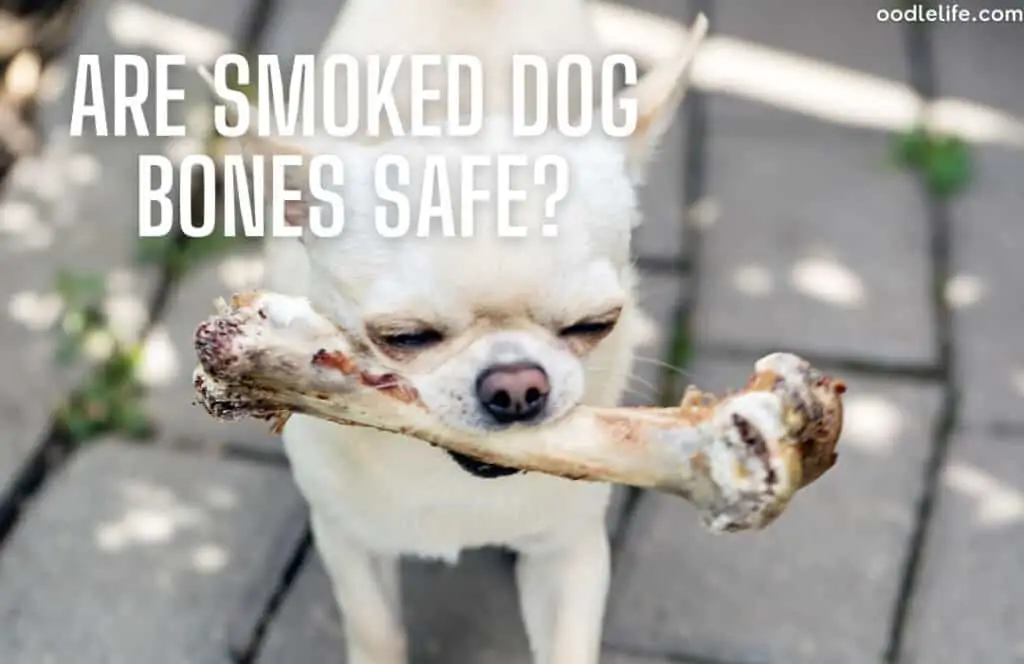
Is there such a thing as chewing too much?
While there’s no need to worry if your dog spends a lot of time chewing, you should ensure it’s not doing it to the point of hurting itself. If you notice your dog’s gums are bleeding or it’s having trouble swallowing, it’s time to take the bone away.
What kinds of bones are safe for dogs to chew?
The best kind of bones for dogs to chew are raw, meaty bones like marrow bones or knuckle bones. You should avoid giving your dog cooked bones. Stay away from pork and poultry bones as well.
When should I take away my dog’s bone?
You should take away your dog’s bone when it gets small enough to pose a choking hazard, which is when it reaches the size of your dog’s mouth. You should also take it away if you find any sharp edges.
How often can you give a dog a bone?
You can give your dog a bone as often as you like, but it’s best to limit it to once or twice a week. Any more than that, you risk developing blockages in its airways if it swallows large pieces.
Additionally, you want it to view a bone as a treat and not an everyday expectation. Giving it a few times a week keeps it excited about the bones it gets.
Can I safely give my dog a bone every day?
While you can give your dog a bone every day, it can become an expensive habit and your dog may no longer get as excited about its bones if it becomes overly familiar with the routine.
However, if a daily bone is something you like to do for your dogs, there’s no specific health risk of giving them a daily bone, as long as it’s under your close supervision.
Are there any other tips for safely giving my dog bones?
Yes! Always supervise your dog while it’s chewing on a bone, and make sure to give it one that is an appropriate size.
Wrapping Up
The short answer to the question, “How long should a dog chew on a bone?” is that it depends.
Chewing bones can provide many benefits for your dog, but it’s critical to do it safely. Only give your dog raw bones that are an appropriate size, and make sure to supervise it while it’s chewing. Inspect the bone regularly for sharp bits, and take it away when it gets small enough to potentially cause choking.
Follow these tips to help your dog safely enjoy the benefits of chewing bones and avoid any unplanned trips to the emergency vet.